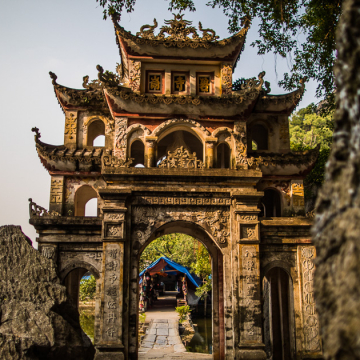A new footbridge held up by two giant hands has just opened near Da Nang in Vietnam, the latest in a line of weird and wonderful structures around the world.
Agolden bridge held up by two enormous stone-coloured hands has opened in the Ba Na hills, near Da Nang in central Vietnam. It is the latest in a series of statement footbridges around the world. Cau Vang (meaning gold bridge) opened in June, is 150 metres long and 1,400 metres above sea level, with views across the green mountainscape. It took just under a year to construct, with initial designs by TA Landscape Architecture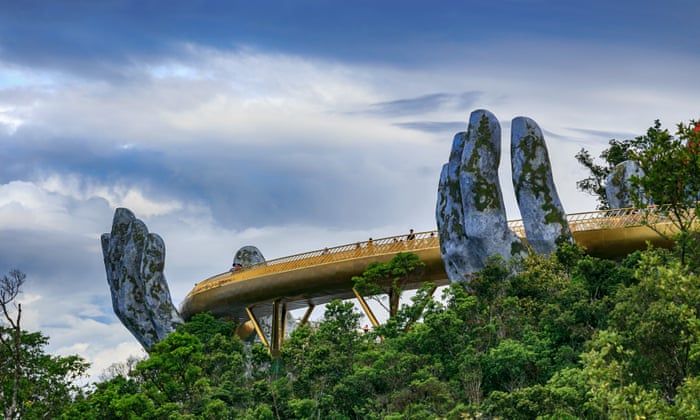
Cau Vang follows in a line of unusual footbridges, seen everywhere from Iowa to India: structures that are noteworthy as architectural statements in themselves, rather than accessories for an already popular location.
In 2014, the Fan Bridge was unveiled in Paddington Basin in London. It currently only operates Wednesdays and Fridays at noon and Saturdays at 2pm, leaving it somewhere between the practical and the artistic. The hydraulic structure, designed by Knight Architects, positions its five steel beams 20 metres across the water, rising in a similar way to a traditional Japanese fan.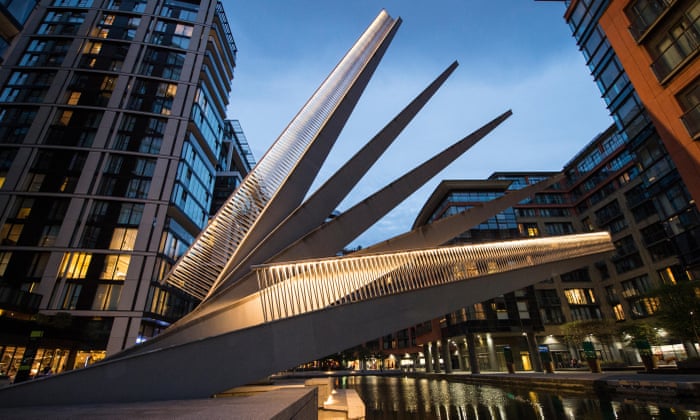
A 185-metre loop of three interconnected red footbridges form Lucky Knot bridge in Changsha, China, which opened in 2006. Designers Next Architects, were inspired by Chinese knotting folk art and the infinite structure of the Möbius strip.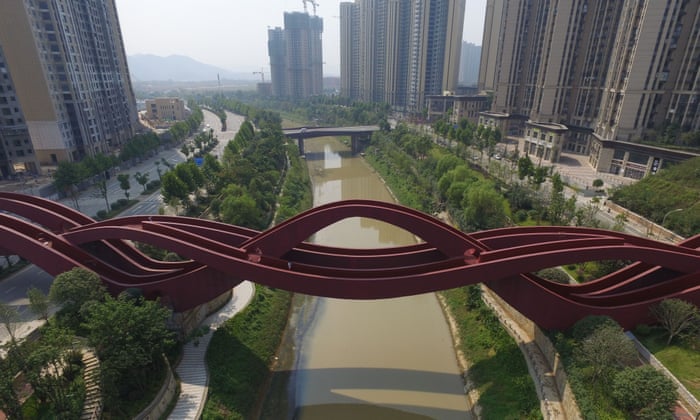
Parting the sea might sound like an impossible act but how about building a permanent pathway through water? The Moses Bridge in the village of Halsteren, in North Brabant, Netherlands, acts like a dam under the waterline, holding the moat on either side. The “sunken” bridge, crafted from pre-treated, rot-resistant wood, was designed by Ro & Ad Architects to provide access to a 17th-century Dutch fort.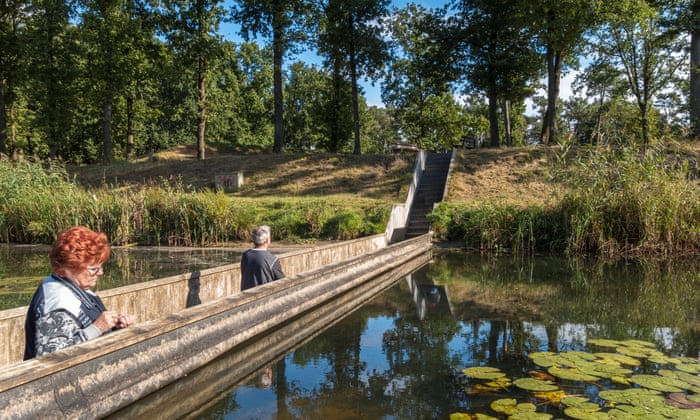
The modern, tubular Webb Bridge connects in Melbourne’s South Wharf with the Docklands area, and was designed by sculptor Robert Owen and engineered in 2003 by Arup – the company behind the Sydney Opera House. Also by Arup, the Helix Bridge in Singapore is a spiralling 300-metre DNA-inspired design from Cox architecture, which completed the Marina Bay walkway in 2010.
Another delight for dusk, is the High Trestle Trail Bridge in Iowa, which runs half a mile over the Des Moines River Valley. As part of a “rails to trails” project, it helps connect the 25-mile trail from Woodward to Ankeny. The illuminated steel beams represent a view through a mine shaft, reflecting the coal mining history of the local area.

